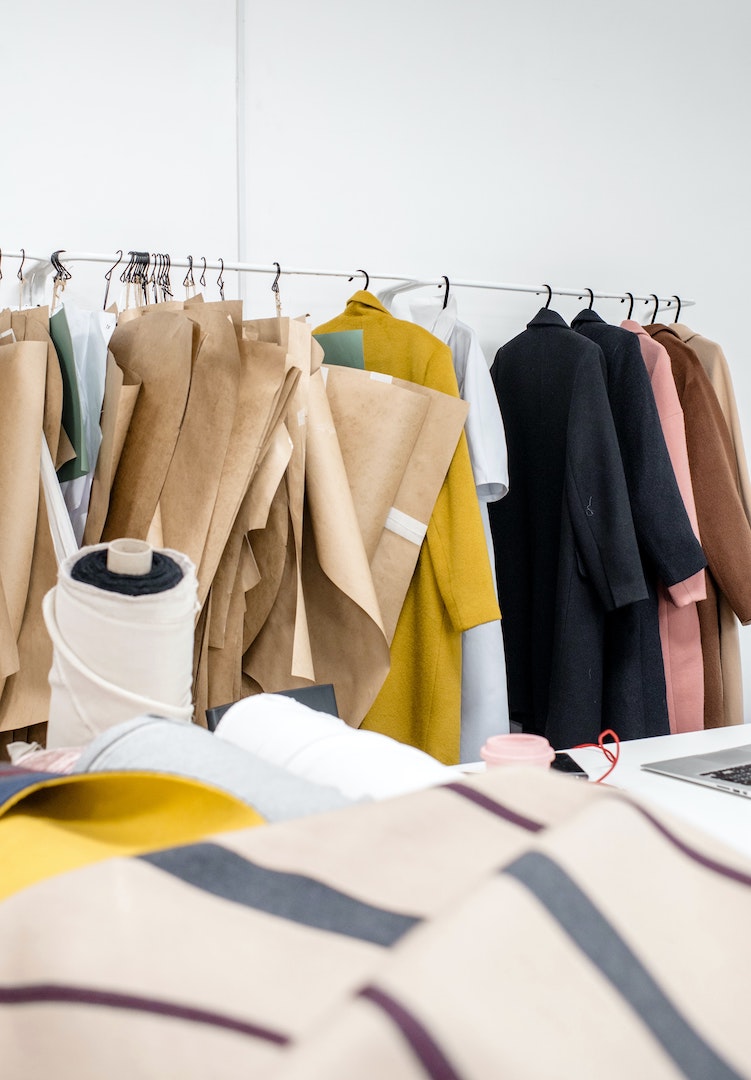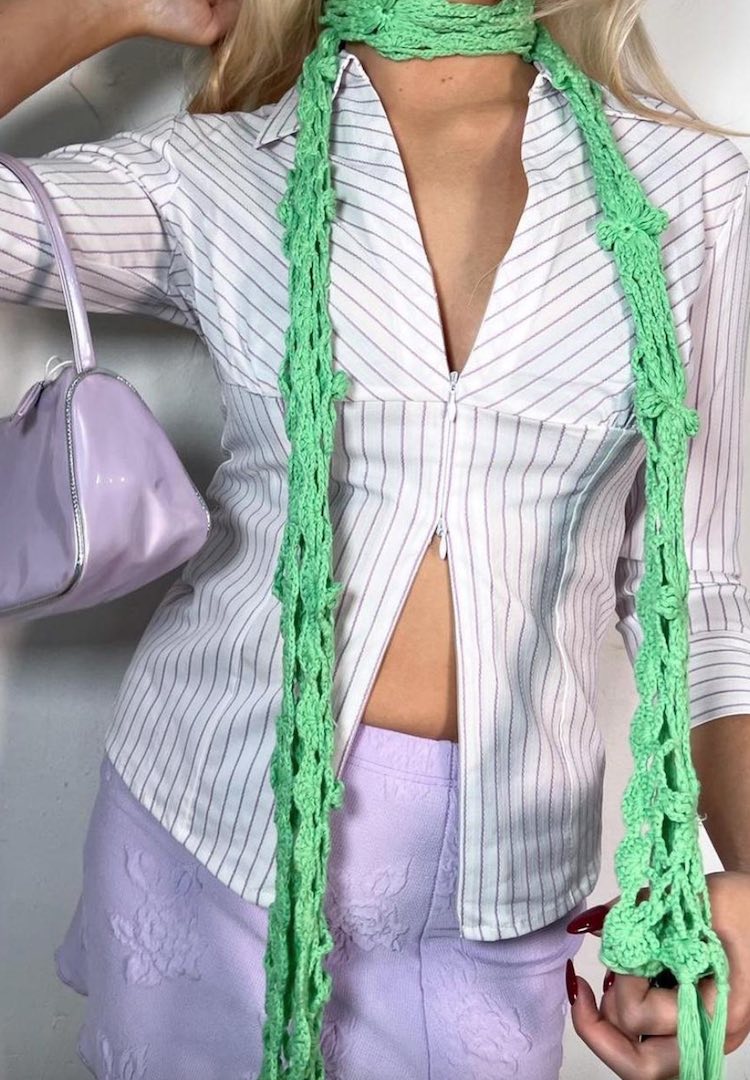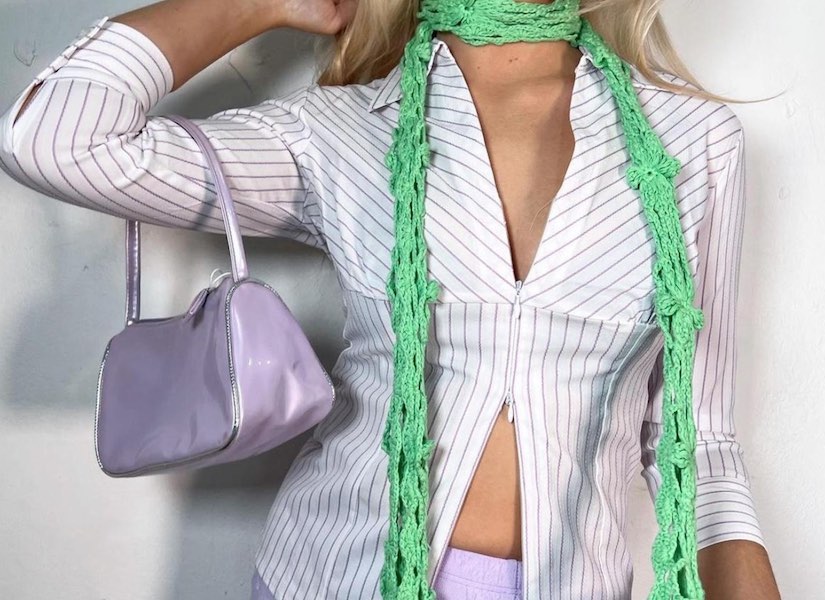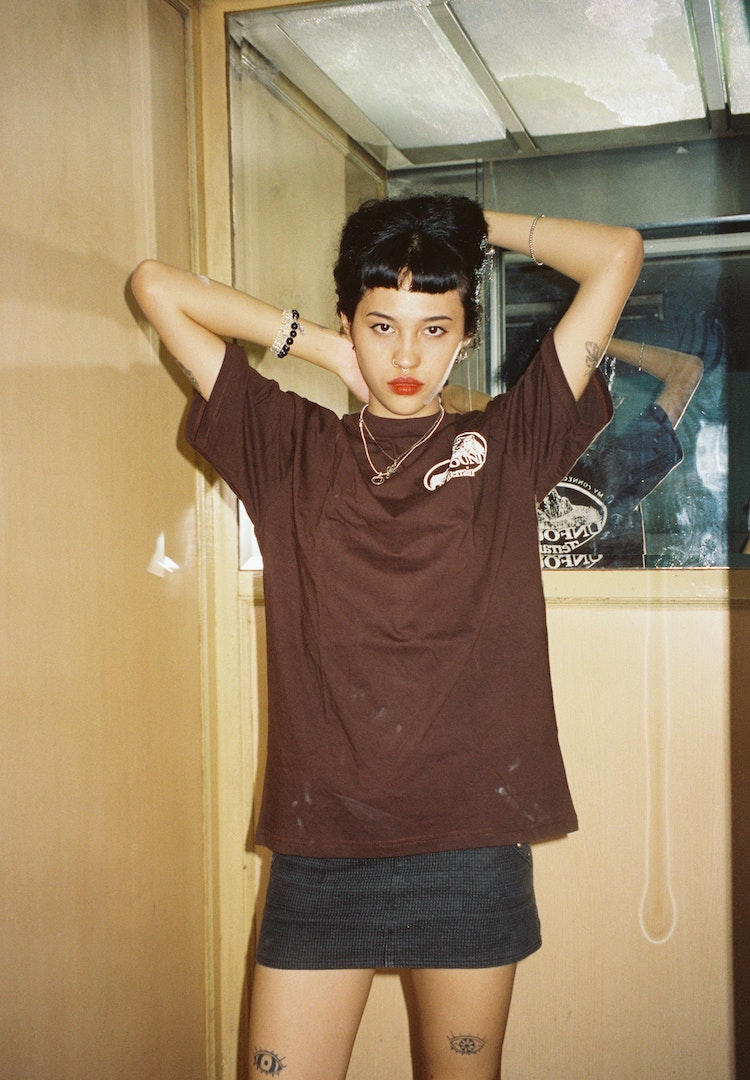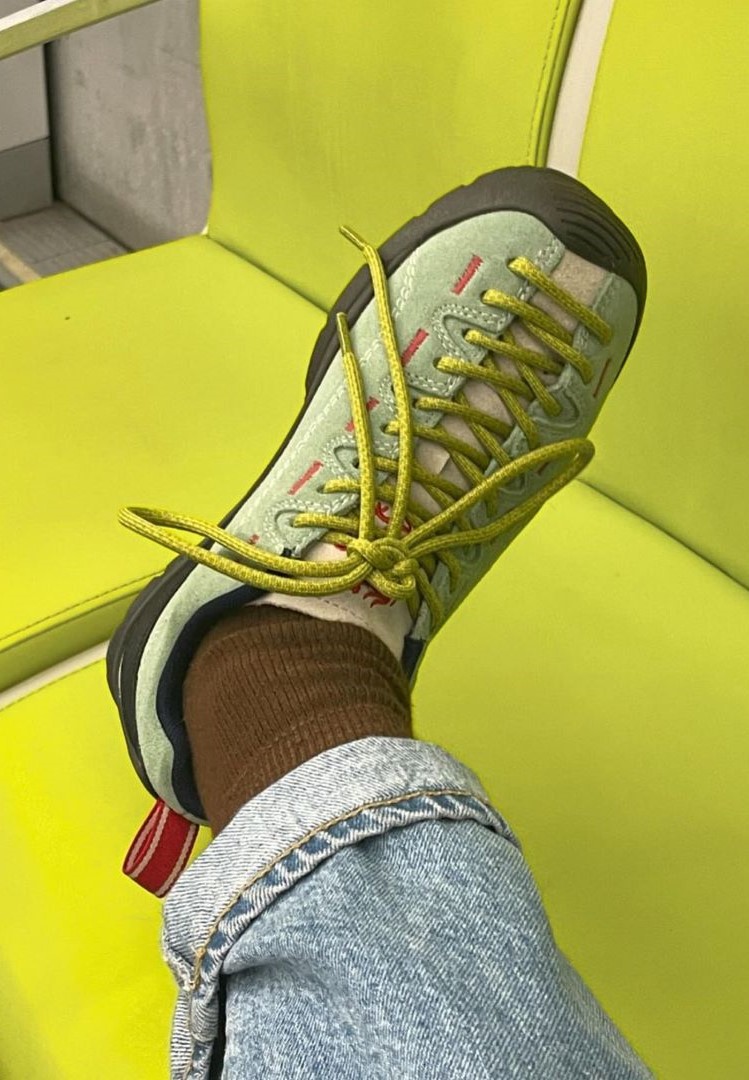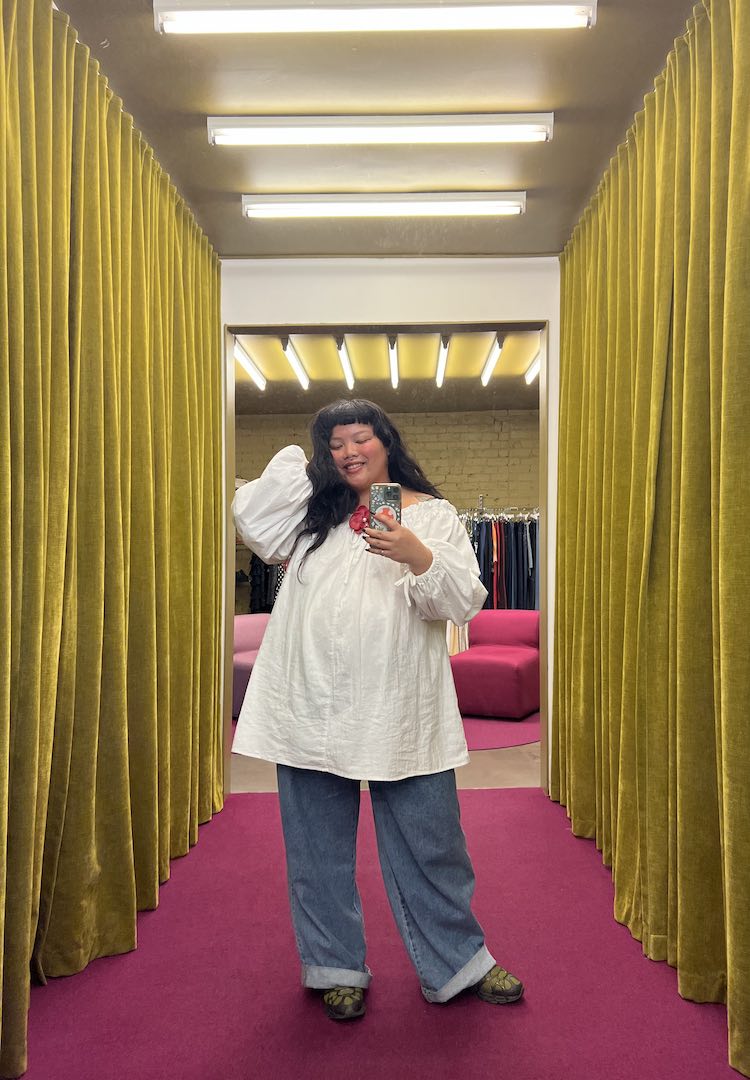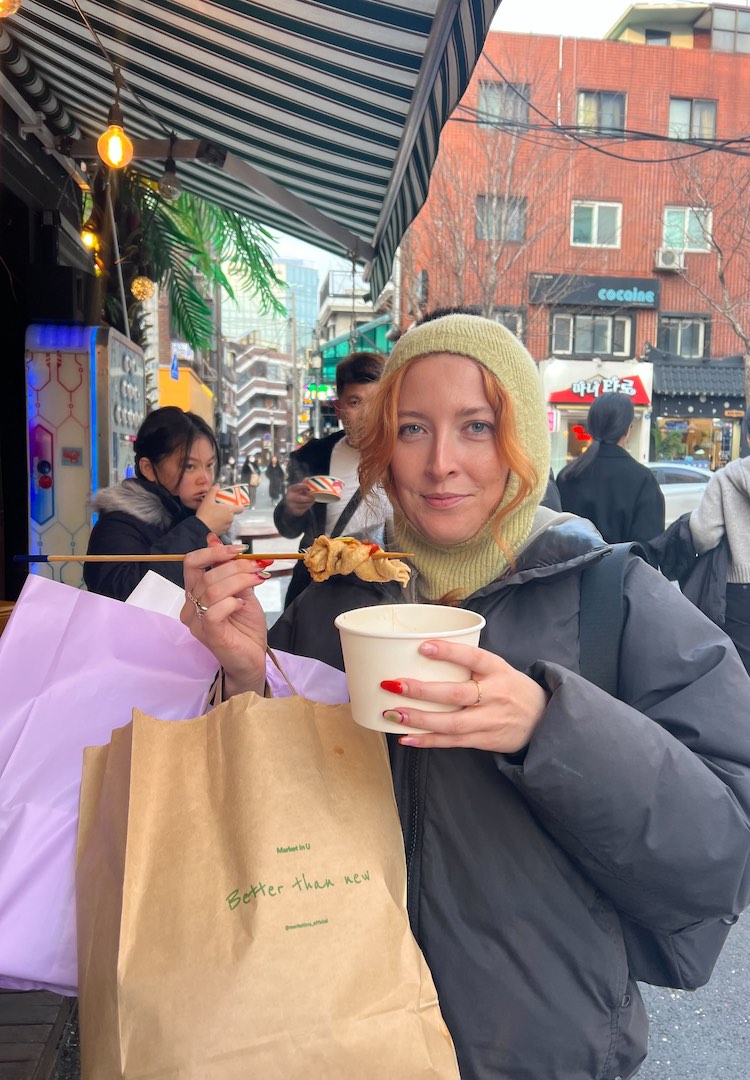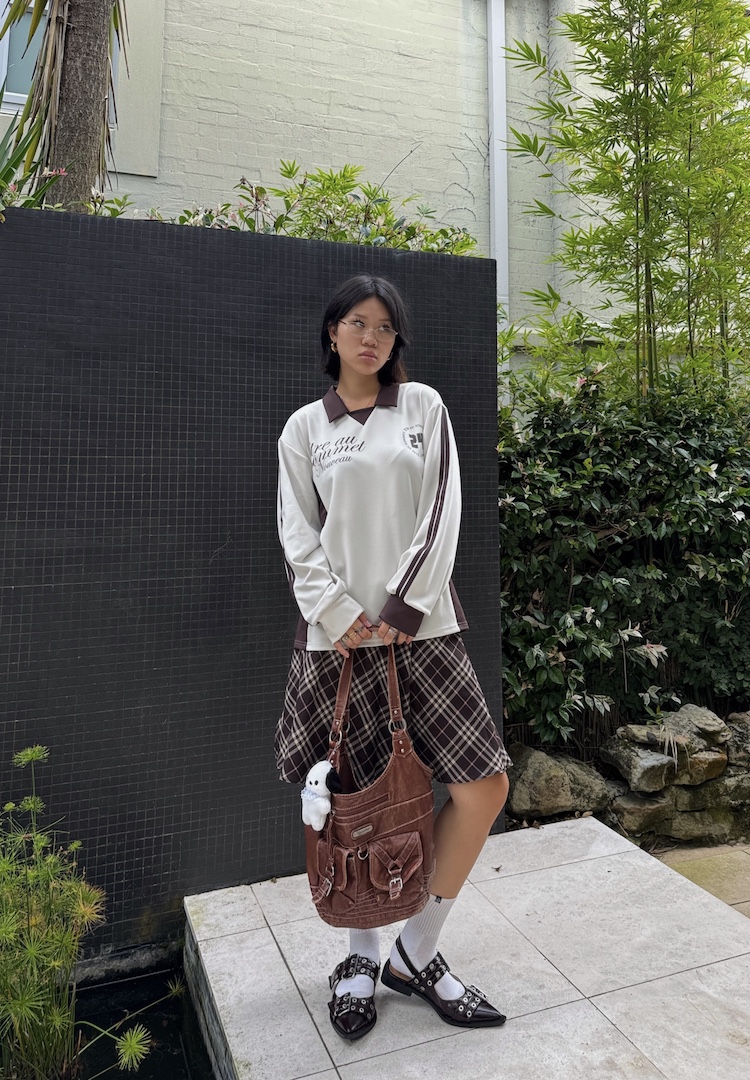5 Australian Depop sellers on how they turned their account into a fully-fledged business
WORDS BY KATE STREADER
IMAGE VIA @KARAMELEON_VINTAGE/INSTAGRAM
“Your eye is what makes your shop unique and bringing that to the community of Depop is what will be most lucrative.”
Depop is a mecca for lovers of vintage and secondhand fashion. Not only is it a great way to grab a bargain and expand your thrifting options exponentially, but it’s a more sustainable way to shop than buying brand new and promotes a longer lifespan for clothing.
While casual Depopers mostly use the app as a shopping tool or a way to clear out their wardrobe from time to time, it’s also become a popular platform for sellers to run online stores to sling their own designs or resell vintage finds.
For more fashion news, shoots, articles and features, head to our Fashion section.
But while the app itself is easy to navigate, getting noticed and growing your following can be a bit trickier so we asked five Depop sellers who have found success on the app to share their secrets.
Panayota Theodore, Panayoyo Studio
View this post on Instagram
What is the name of your Depop store and how would you describe what you sell to someone who’s never seen your store before?
Panayoyo Studios is a play on my name Panayota – I set up Panayoyo as a textile studio offering to make life a little brighter with limited edition screen prints on an array of fabulous handbags. If I had to describe Panayoyo in a few words it would be fun, flirtatious, and vibrant.
Panayoyo is a chance for me as a textile and fashion designer to go back to basics, channelling sustainable practices of hand printing, local production, and up-cycled fabric sourcing to create conscious but timeless designs that make you look and feel good.
How did you get into selling on Depop and how long did it take for you to turn it into a fully-fledged business/side hustle?
I first discovered and fell in love with Depop about seven years ago as a customer, spending hours at a time getting lost in the world of each seller’s store. I became a seller with Depop just under a year ago. Depop has been super supportive of my store, recommending @panayoyo_studio as a ‘Seller To Watch’ on the main page a few times, which has really spread the love and following for my store.
What advice do you have for someone who’s looking to find success on Depop? Any tips and tricks?
If you are in the sphere of making/designing your own products, just have fun with it and be completely honest with yourself – don’t create products you think people want, create what YOU love, and the rest will come naturally. The great thing about Depop is it lets you connect with so many different people all around the world that you wouldn’t normally be able to.
Kara Otter, Karameleon Vintage
View this post on Instagram
What is the name of your Depop store and how would you describe what you sell to someone who’s never seen your store before?
Karameleon Vintage sells a collection of hand-picked one-off pieces and brand-new condition deadstock clothing from the ’90s through to the 2000s, specialising in a Y2K aesthetic.
The name of our Depop store took inspiration from a chameleon, always changing its skin and prints. We took this and incorporated it with my name, Kara. Karameleon Vintage’s sister brand, Karameleon, is always inspired by the best vintage we find.
How did you get into selling on Depop and how long did it take for you to turn it into a fully-fledged business/side hustle?
Karameleon Vintage started selling vintage at a market in Sydney as a side hustle where we started getting a following and people began recognising our stuff as wearable and fun. So Depop was a very natural transition. Fast-forward two years and we are now a fully-fledged business. Due to our success, we have now opened an IRL store in Newtown called So Familia which we opened one year ago. Our store houses our latest collections – we find that keeping our prime vintage deadstock pieces and sunglasses on Depop is best as these are our best sellers.
Karameleon Vintage is a family business operating from our grandma’s house – we are two cousins who source new and extraordinary pieces and mum packs and sends the orders. Our family dynamic enabled us to transition into a fully-fledged business where we now source stock from overseas and different places to keep our collections fresh and exciting.
What advice do you have for someone who’s looking to find success on Depop? Any tips and tricks?
A hot tip we stick by is to stay true to your own aesthetic and style, your Depop store will shine that way! Finding new stock and uploading these daily will assist traction and help exposure when Depop buyers are discovering new pieces.
We cannot stress enough the importance of taking photos with good lighting and ensuring the detail of the piece you are selling is clear. We find styling our collections ensures that buyers are able to visualise themselves in the piece, this way potential buyers can see how they could wear it.
Misha Davis, Average Local
View this post on Instagram
What is the name of your Depop store and how would you describe what you sell to someone who’s never seen your store before?
My Depop store is called Average Local. I chose that name to create a sense of community within the sustainable fashion industry as your everyday Average Local, like you’re heading to the local bodega or corner shop in your neighbourhood.
Working on every aspect of the store with the help and support of friends and family, I launched Average Local to bring to light items designed and developed with the next use in mind, looking beyond the current take-make-waste extractive fashion industry. The store focuses on well-designed pieces made to last, as well as providing a sustainable and environmentally-friendly option in an ongoing effort to support the circular fashion economy.
How did you get into selling on Depop and how long did it take for you to turn it into a fully-fledged business/side hustle?
Average Local started from my unhealthy obsession with clothing and everything ’90s and noughties. I started collecting vintage and archival pieces for my personal collection as soon as I got my first job at the age of 16 as a way to shop consciously with the little money I had.
As the years went on, I started to garner a lot more attention because of the way I dressed and was asked frequently by friends, family and strangers on the street where I got my clothes, only to read the disappointment on their faces when I said I was wearing vintage. Back then, vintage wasn’t as mainstream and accessible as it is today. So, with that in mind, I thought I would share my obsession, my vintage finds and my buying addiction with everyone else.
What advice do you have for someone who’s looking to find success on Depop? Any tips and tricks?
Make it an extension of yourself – an expression of your style and your personal taste. Through Average Local, I sell the brands and pieces I love and believe in, like Prada, Miu Miu, Jean Paul Gaultier and Vivienne Westwood, as I personally feel these fashion houses, among a few others, were pioneers in the ’90s for changing how people perceived fashion. They made daring choices and pushed the boundaries, which is unfortunately something we don’t see as often as we should in the fashion industry.
You must have passion for what you do and hold value in what you sell. Why follow trends and sell pieces you don’t care about just to put another dollar in your pocket? Be transparent in your values because it goes a long way in resonating with your community.
Laika Jeffery, Laika
View this post on Instagram
What is the name of your Depop store and how would you describe what you sell to someone who’s never seen your store before?
My Depop store is Laika. I sell a curated collection of primarily ’90s and Y2K pieces in line with the current trends, heavily influenced by surf culture – think old Billabong and Ripcurl, cargo pants, baby tees – along with timeless, classic pieces such as vintage Levi’s, leather jackets and knee-high boots, as well as fun, rare and unique items! I take a lot of inspiration from ’90s fashion and surfing magazines, and TV shows like Friends, and pay a lot of attention to quality.
How did you get into selling on Depop and how long did it take for you to turn it into a fully-fledged business/side hustle?
Laika started out to get rid of some of my clothes and make some extra cash to fund my love of thrifting. I found the more I played around and got creative with it, the more practical skills I developed and the more my Depop began to grow. It took about two years of consistency and building up my shop to become a Top Seller, and since then I haven’t looked back – especially after learning more about the fast fashion industry and the importance of shopping sustainably for our planet.
Living in a remote area, there aren’t many options for work, so it has been the perfect fit for my lifestyle and location while also being a way for me to express my creativity and inner treasure hunter. I truly love the process, and of course, it is a great way to encourage sustainability through recycled clothing.
What advice do you have for someone who’s looking to find success on Depop? Any tips and tricks?
The best piece of advice I can give is to be authentic! Don’t be afraid to express yourself. Experiment with different ways of styling items, taking photos, sharing them, and finding what works for you. Only sell what you love, that’s what makes your shop stand out. Be kind to all, be open-minded and be patient and consistent. Work hard and have fun!
Ari Kiko, Kiko Vintage
View this post on Instagram
What is the name of your Depop store and how would you describe what you sell to someone who’s never seen your store before?
My Depop store is called Kikovintage. I sell vintage designer and European vintage from the ’70s – 2010s. I try to curate colourful, special and archival pieces. I also pick out non-branded vintage items that I just like which I think fit the aesthetic of my store and the Kiko girl might like.
How did you get into selling on Depop and how long did it take for you to turn it into a fully-fledged business/side hustle?
I was introduced to Depop in 2016. But I’ve always loved clothes. Even when I was a little kid I never let my parents dress me, I always wanted to dress myself. When I moved out of home, I didn’t have much money but I had heaps of clothes.
I think the first thing I sold was a vintage leopard print coat that I bought in Berlin and I remember delivering it to the girl on the day and just being like, ‘Wow, this is crazy. I’ve never met this person in my life and all of a sudden, they have my jacket and they’re enjoying it’. It was such a rush. Since then it’s progressively moved from the periphery to the centre of my life, and so far I’m enjoying the ride!
What advice do you have for someone who’s looking to find success on Depop? Any tips and tricks?
Perseverance is key! And be nice, customer service is super important and I think the way you relate to people is a crucial part of success and building the reputation of your store. Stay true to what you like, rather than trying to emulate someone else’s style or what you think other people think is cool, because your eye is what makes your shop unique and bringing that to the community of Depop is what will be most lucrative.
Find more Depop sellers here.

